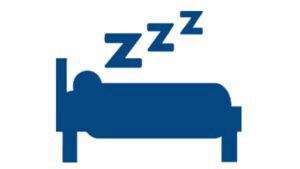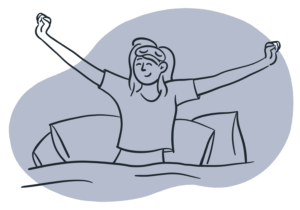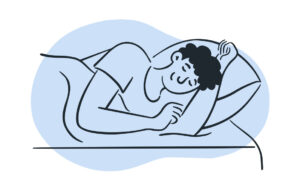Blue Light and Sleep
Disclosure: By clicking on the product links in this article, Mattress Nerd may receive a commission fee at no cost to you, the reader. Read full disclosure statement.
You may not recognize blue light when you see it, but it’s everywhere. It travels through the atmosphere within the sun’s beams and collides with air molecules, giving the sky its blue luster. Blue light also emits from LED and fluorescent light bulbs and from electronic devices such as flatscreen TVs and smartphones. Whether you’re soaking up the sun outdoors or gazing at a digital device into the wee hours of the night, the average American gets a whopping dose of blue light each day.
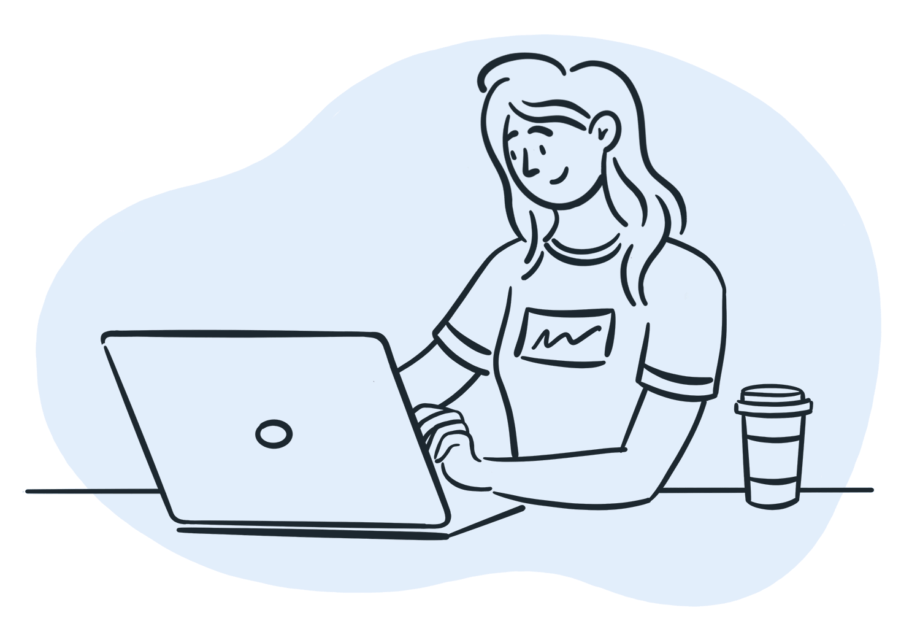
What is Blue Light?
Visible light is made up of a range of wavelengths and energy. When all wavelengths of visible light are combined in equal intensity, they produce white light. The most abundant form of natural white light comes from that big ball of warmth in the sky, our sun.
White light can be separated into different color bands based on wavelength. The main color bands are blue, green, yellow, orange, and red. A rainbow is an example of the full spectrum of visible light.
The wavelength of each band of light determines its color and energy. Red light has the longest wavelengths and the lowest energy, or frequency. Blue light has the shortest wavelengths and thus the highest frequency.
“Because of its high frequency, blue light is very stimulating to the body and mind, creating strong alpha and beta brainwaves in the mind, keeping alertness high, and headspace clear,” says Stefan Burns, a holistic wellness practitioner and creator of Wild Free Organic. Because of its effect on the body and the brain, high-energy blue light is essential to good health. It boosts alertness, helps memory and cognitive function, and improves mood. It also helps regulate the circadian rhythm, the body’s internal 24-hour clock that governs our natural wakefulness and sleep cycle.
But too much blue light can be a bad thing. Blue light contributes to eye strain, may increase the risk of macular degeneration (which can lead to permanent vision loss), and can throw your sleep cycle out of whack, which can lead to daytime fatigue and other serious health conditions related to insufficient sleep.
How are Blue Light and Sleep Connected?
“The sleep-wake cycle is one of the most significant and well-known circadian rhythms,” says Dr. Sam Elmais, founder of Medlink Students, in the U.K. The circadian rhythm—our internal 24-hour clock—cycles around in predictable patterns every day telling us when to sleep, when to wake up, when to eat, and so on.
“The essential component in synchronizing circadian rhythms is light,” Elmais adds. “These rhythms were closely aligned with sunrise and sunset for much of human history.”
For example, when we see the sun setting and night fall, sensors in our eyes send a message to the suprachiasmatic nucleus which triggers the production of melatonin, the hormone that makes us sleepy. When our eyes detect sunlight, it triggers wakefulness. For most people, this process works like clockwork, thanks in large part to sunlight, which is the main source of natural blue light.
When we encounter synthetic blue light, such as in the form of LED lights or from electronic devices like the TV or smartphone, our bodies get confused. Instead of sending cues to the brain that it’s time to release melatonin in preparation for bed, the brain becomes stimulated and promotes wakefulness.
“Blue light boosts our attention and produces a higher amount of energy—great for the day, not so great for our sleep!” says Katherine Hall, a sleep psychologist and sleep coach at Somnus Therapy, an online sleep therapy program. “Just one hour of screen exposure can delay the release of melatonin by three hours, in addition to releasing it in much smaller quantities.”
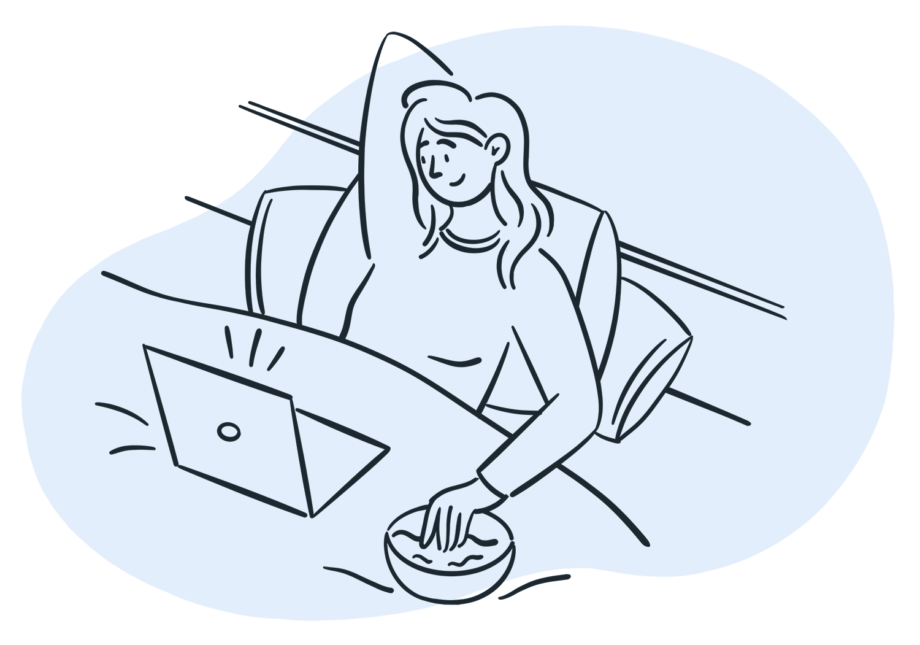
Where does Blue Light Come From?
- Sunlight
- Smartphones
- TVs
- Fluorescent lights
- Computers and tablets
- Video games
- LED lights
- E-readers/tablets
Combating the Effects of Blue Light
Understanding the impact blue light has on the sleep-wake cycle may encourage people to make some minor lifestyle changes in order to improve sleep. Here are some suggestions:
- Get outdoors during daytime hours. “This can help you maintain your circadian rhythm, boost your mood during the day, and sleep better at night,” says Dr. Chris Airey, a practicing NHS physician and medical director at Optimale.
- Set an “electronics curfew” about two hours before bedtime, and unplug the devices, suggests Stephen Light, a certified sleep science coach and co-owner of Nolah Mattress.
- Try blue light blocking glasses. “If ditching your laptop and phone for a couple hours before bed isn’t an option, try light blocking glasses,” suggests Mark Zhang, CEO and founder of Manta Sleep mask. These specially crafted glasses filter out blue light that emits from digital screens.
- Watch for glowing indicator lights. Even when you turn off electronic devices, the power indicators shine with green, red, or orange lights. These lights can also emit blue light and interfere with your sleep. Zhang suggests covering those indicator lights with duct tape or blackout stickers.
- Check the settings on your electronic devices. Some laptops, tablets, and smartphones have a “night mode” setting that you can enable, which dims the lights on your device. If your devices don’t have this option, look for apps that you can download to reduce blue light emissions.
- Establish a nighttime routine. It can be hard to break the habit if you’ve gotten used to watching TV or scrolling through your smartphone before bedtime. One way is to improve your sleep hygiene by establishing a nighttime routine. Start about an hour before bedtime with activities to help you wind down for the evening. For example, turn off electronics, take a warm bath, or read a book. “Meditation and breathwork can also help by calming the body,” Burns says.
Create a sleep sanctuary. Your bedroom should be a mecca that’s conducive to sleep. Invest in a new mattress that’s both comfortable and supportive. Use breathable linens to keep you cool throughout the night. And slip on a sleep mask to block out any light that may stray into your bedroom at night and threaten your sleep.
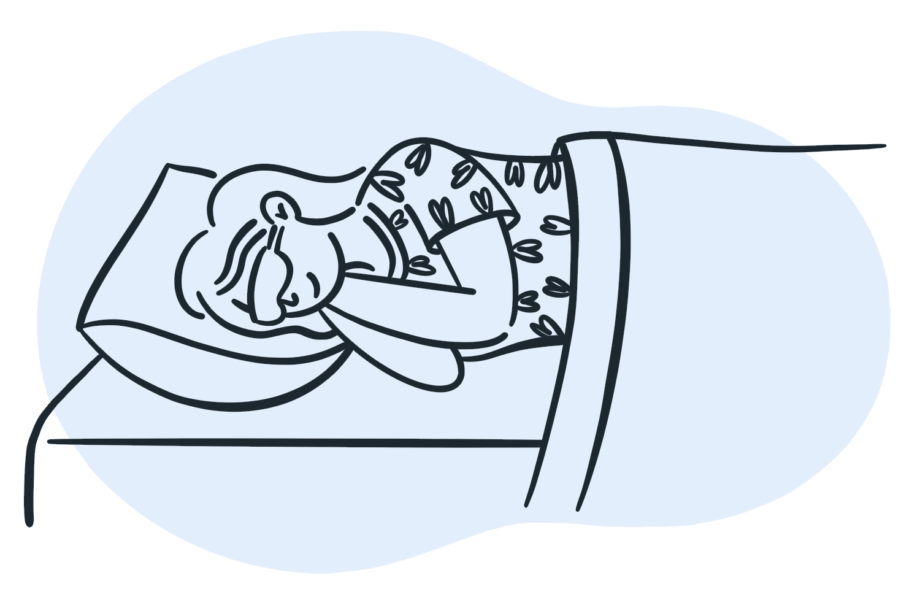
Final Thoughts
Humans have been influenced by blue light for as long as they have been on the planet. This short wavelength, high energy light stimulates the brain and promotes alertness during the day. As daylight—and blue light—fades in the evening, it tells the brain that it’s time for bed by releasing the sleep hormone melatonin.
But due to technological advances in the form of television sets, computers, tablets, and smartphones, Americans are exposed to an average of six hours of artificial blue light each day. Blue light too late in the evening can interfere with the circadian rhythm and disrupt sleep.
There’s no need to toss out your devices in order to get a good night’s sleep. Adopting a few strategies can help mitigate the harm caused by blue night, and improve your chances of sleeping peacefully through the night.


